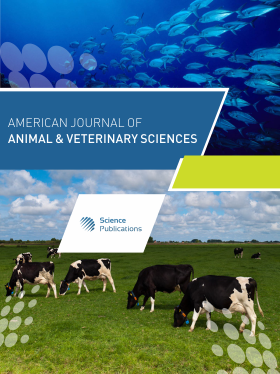Correlation of Oxytocin (OTR) and Estrogen Receptor (ER) mRNA in the Canine Placenta with the Detected Circulating Levels of Oxytocin and Estrogen during Pregnancy and Parturition
- 1 University of São Paulo (USP), Brazil
- 2 ABC Federal University (UFABC), Brazil
Abstract
Placenta is considered an important endocrine organ during gestation, as well as can also serve as a target organ for sex steroids and pituitary hormones, mainly for the cascade of events that trigger parturition. In order to initiate studies on the canine placental endocrinology regarding estrogen and oxytocin, the present study verified the correlation among the Estrogen Receptor alpha (ERα) and Oxytocin Receptor (OTR) gene expression in the placenta tissue with the serum concentrations of their respective hormones (estrogen and oxytocin) during canine pregnancy and parturition. Real-time PCR was performed to quantify the levels of ERα mRNA and OTR mRNA in the placenta tissue of bitches (n=46) during Early (up to 20 days of gestation; n=11), Mid (20 to 40 days; n=12) and Late Pregnancy (40 to 60 days; n=12) and Parturition (first stage of labor; n=11). Serum samples were collected for the evaluation of estradiol and oxytocin (OT) concentrations by radioimmunoassay. Placental ERα mRNA expression showed a progressive decrease along gestation towards parturition. Placental ERα mRNA expression was significantly higher until 40 days of pregnancy in comparison to Parturition. Regarding OTR mRNA expression, no statistical differences among groups were verified. The Parturition Group presented higher estrogen concentrations in relation to Early and Mid Pregnancy Groups. Serum oxytocin concentrations were not different among pregnancy and parturition. During late pregnancy, a positive correlation was observed between placental ERα mRNA and oxytocin serum concentration. In conclusion, ERα mRNA in the canine placental tissue varies in a time-dependent manner, especially during the period of placentation and placental growth. Conversely, serum estrogen concentrations do not regulate directly the changes in OT receptors expression in the canine placenta.
DOI: https://doi.org/10.3844/ajavsp.2016.11.17

- 6,407 Views
- 4,991 Downloads
- 1 Citations
Download
Keywords
- Estrogen
- Oxytocin
- Receptor
- Placenta
- Canine
